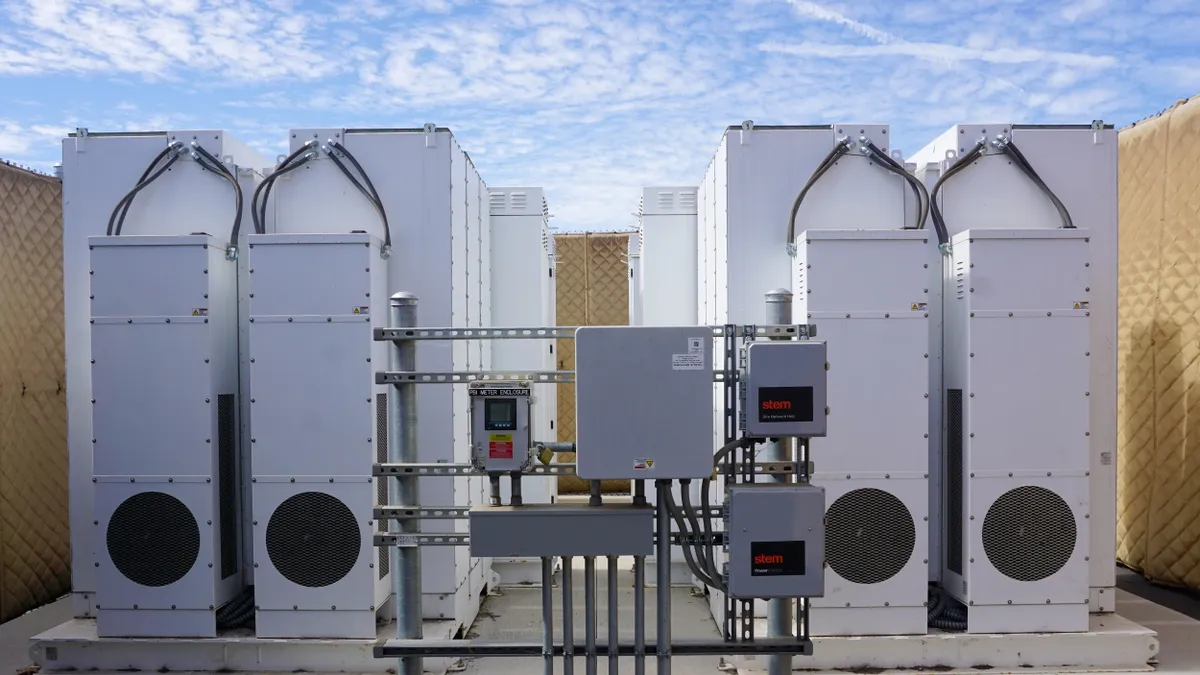Dive Brief:
- Developers and power plant owners plan to increase utility-scale battery storage capacity in the U.S. nearly four-fold in the next three years, reaching 30 GW by the end of 2025, according to a Dec. 8 post by the U.S. Energy Information Administration on its website.
- Battery storage capacity was negligible before 2020, when electricity storage capacity began quickly growing. As of October, 7.8 GW of utility-scale battery storage operated in the U.S., the EIA said.
- Growth in U.S. battery storage capacity is outpacing the early growth of utility-scale solar capacity, which began expanding in 2010 and rose from less than 1 GW in 2010 to 13.7 GW in 2015, the agency said.
Dive Insight:
Developers and power plant operators expect to be using 1.4 GW more battery capacity by the end of the year than in October. From 2023 to 2025, EIA forecasts another 20.8 GW will come online.
More than 75% of the capacity that owners and operators say they will install in the next three years is in Texas with a projected 7.9 GW, and California, at 7.6 GW.
As more battery capacity becomes available to the grid, battery storage projects are growing in capacity. Before 2020, the largest U.S. battery storage project was 40 MW. The 409-MW Manatee Energy Storage in Florida is the largest operating battery storage project in the country, EIA said.
The Gateway Energy Storage System in California marked the start of large-scale battery storage installation in 2020 and is now at 250 MW, according to the EIA.
Developers have scheduled more than 23 large-scale battery projects, ranging from 250 MW to 650 MW, to be deployed by 2025, EIA said.
The “anticipated acceleration” of energy storage capacity in the U.S. follows the passage of the Inflation Reduction Act in August, with tax credits benefiting wind, solar and storage, BloombergNEF said in October.
The law will drive roughly 30GW/111GWh of energy storage build from 2022 to 2030, according to BNEF. The tax credit policy supports more growth based on BNEF’s long-term forecast, but supply chain constraints cloud deployment expectations until 2024, it said.
Energy storage installations around the world are projected to reach a cumulative 411 GW by the end of 2030, according to BloombergNEF. It’s 15 times the 27GW/56GWh of storage that was online at the end of 2021.















